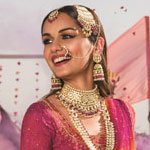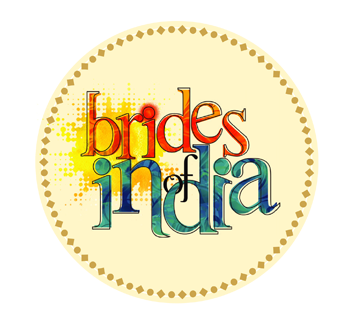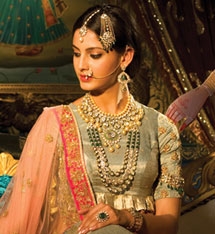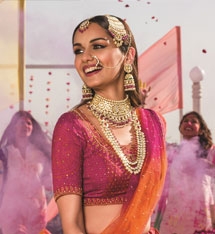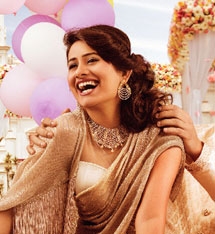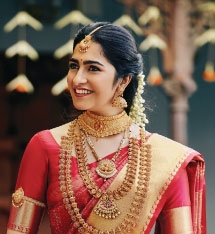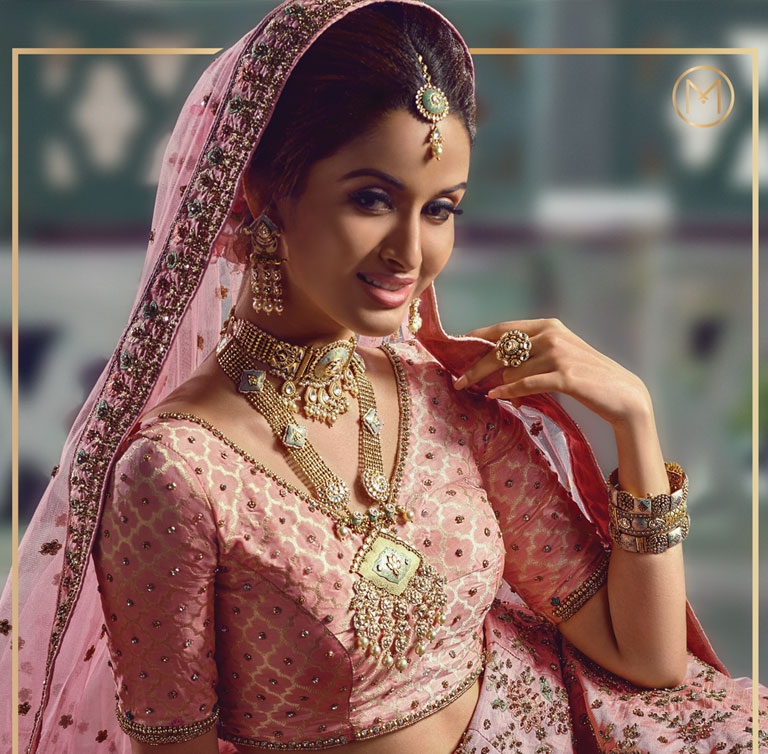-
Home2023 EditionEditionEditionCelebration brideCelebration BrideRoyal bride5Fashion brideFashion Bride
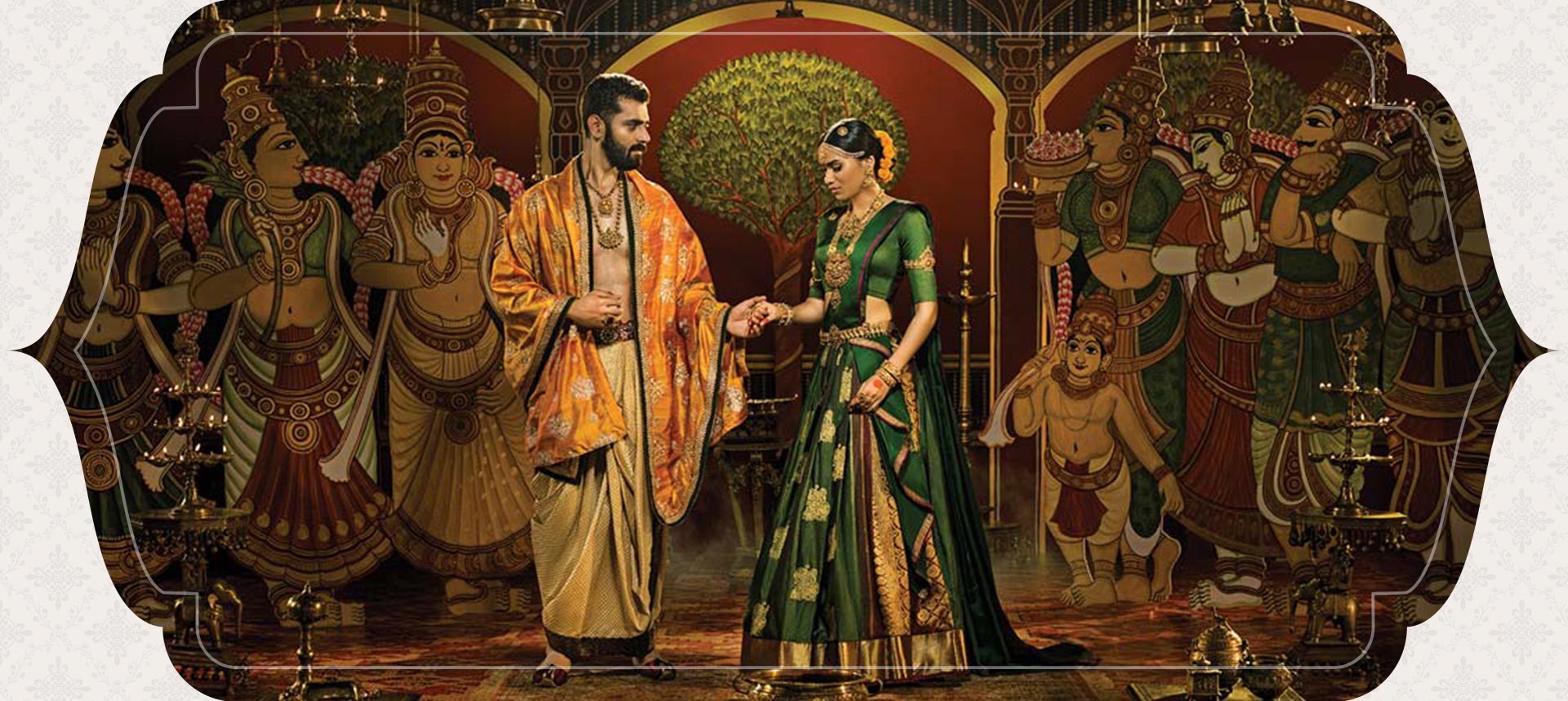
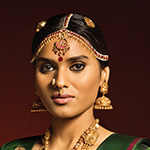
Vijaya Nagara
- HOME
- Royal Wedding
- Vijaya Nagara Dynasty
BackRituals
Royal weddings in the Vijayanagara empire were a combination of lavish preparations and religious traditions. Nothing began before appeasing the gods. Beginning with the chanting of Vedic hymns, invocations to the royal family deity and worship of the raj-guru (chief priest), a series of rituals followed which signified reverence for the people and the elements. Pada puja was an intrinsic part of Vedic culture and royal weddings in the region. The bridegroom and bride while still in their separate rooms were blessed by their parents and other elders. The elders’ feet were washed by the couple and smeared with turmeric. Mangalaya Dharanai which is practiced to this day was also a marked ritual back then. Here the groom ties the nuptial knot three times with the mangalaya or yellow thread, after it is placed around the bride’s neck. The bridegroom then places a spot of kumkum on the bride’s hair parting. The bride adorns toe rings. Both acts signify her married status. The couple then exchanges garlands. The yellow thread many a times is eventually replaced by a gold chain which is expected to be worn by the bride for the rest of her life. Kashi Yatra used to add an element of drama to the elaborate ceremony and is still performed. Before the tying of the knot, the groom walks away, saying he has mastered the four Vedas and six Shadangs and will pursue more knowledge in Varanasi (a sacred city for Hindus). At this point, the father of the bride asks him why he is going alone and that the groom should take a partner with him on the journey of life. The father then offers gifts, usually silver articles, and washes the groom’s feet as a sign of respect. He then requests the bridegroom to return and marry his daughter. The groom is then dressed in wedding attire and is asked to look into a mirror to admire his reflection. This custom ends with the bride’s brother opening an umbrella from which flowers fall, welcoming the groom back. One can imagine the performance of Kashi Yatra in the 13th century in the royal courts of Vijayanagara.Useful Links Scheme Payment(India only)
Make an Appointment Build your Custom Jewellery Smart Buy Offers New Arrivals Exclusive CollectionCustomer ServiceMalabar Gold & Diamonds
402, Valecha Chambers, Plot No. B-6,
New Link Road, Opp. Infinity Mall,
Andheri (W) ,
Mumbai - 400053. +91 22 62300916 care.in@malabargoldanddiamonds.com

